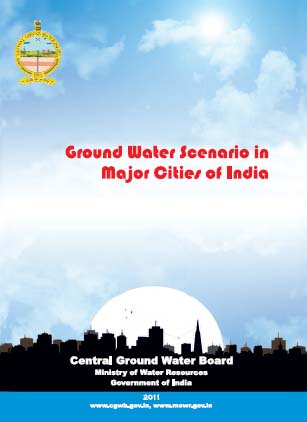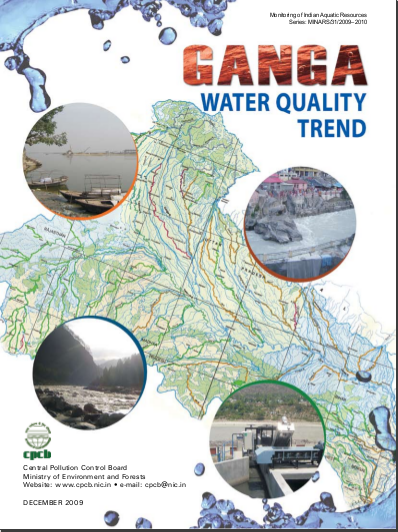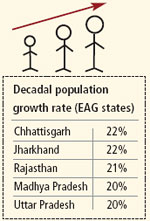/sub-categories/data
Data
Department of Drinking Water and Sanitation – Information on water and sanitation in India
Posted on 13 Jun, 2011 09:20 PMA huge number of links are present on these sites which provide access to various data and information regarding the status of rural drinking water & sanitation and related government projects.
Groundwater scenario in major cities of India – A report by Central Ground Water Board
Posted on 17 May, 2011 10:35 AM It covers varying groundwater scenarios in the country including the highly developed metros, the hilly region, the coastal cities, the cities tapping unconsolidated and hard rock aquifers. The report briefly describes the administrative set up, status of water supply and demand, groundwater scenario, feasibility of rainwater harvesting and groundwater development strategy.
It covers varying groundwater scenarios in the country including the highly developed metros, the hilly region, the coastal cities, the cities tapping unconsolidated and hard rock aquifers. The report briefly describes the administrative set up, status of water supply and demand, groundwater scenario, feasibility of rainwater harvesting and groundwater development strategy.
It is an updated version of an earlier report on “Groundwater in urban environment in India” (2000). Since then, groundwater regime, urban demography and water demand have changed enormously. This report will form a scientific base for an in-depth understanding of urban groundwater system including aquifer geometry, water level behavior and groundwater quality. The possibility of artificial recharge to rejuvenate the urban aquifers has also been discussed.
Agencies monitoring groundwater level in various parts of India in 2011 A list by the Central Ground Water Board
Posted on 16 May, 2011 07:26 PM
The CGWB has been monitoring groundwater levels on a quarterly basis during January, April/ May, August and November through a network of about 15000 observation wells located all over the country. This data is used for assessment of groundwater resources and changes in the regime consequent to various development and management activities.
Estimation of groundwater resources in Andhra Pradesh - A report by the State Groundwater Department - GoAP (2002)
Posted on 14 May, 2011 05:19 PMThe sustainable development and management of the resource requires precise quantitative assessment based on valid scientific principles. The updated Groundwater Estimation Committee methodology – 1997 has been used and detailed guidelines were formulated through discussions and deliberations in the State Level Groundwater Estimation Committee.
Hydrology and quality of groundwater in and around Bangalore city - Review and excerpts from the report released in March 2011, by the Department of Mines and Geology (Govt of Karnataka)
Posted on 10 May, 2011 08:34 PMA welcome and important document, it brings up-to-date our understanding of the rapidly changing groundwater situation in Bangalore.
| Month | New borewells added each month | Borewells registered with BWSSB | Monthly % growth |
| Jan-09 | 91018 | ||
| Feb-09 | 924 | 91942 | 1.02 |
| Mar-09 | 705 | 92647 | 0.77 |
| Apr-09 | 965 | 93612 | 1.04 |
| May-09 | 1136 | 94748 | 1.21 |
| Jun-09 | 748 | 95496 | 0.79 |
| Jul-09 | 904 | 96400 | 0.95 |
| Aug-09 | 868 | 97268 | 0.90 |
| Sep-09 | 2062 | 99330 | 2.12 |
| Oct-09 | 838 | 100168 | 0.84 |
| Nov-09 | 875 | 101043 | 0.87 |
| Dec-09 | 2699 | 103742 | 2.67 |
| Jan-10 | 1759 | 105501 | 1.70 |
| Total as on Jan-2010 | 14483 | 105501 | 15.91 |
Growth of bore wells during February 2009 to January 2010 in Bangalore city
Ganga water quality trend - A report by Central Pollution Control Board (2009)
Posted on 30 Apr, 2011 05:39 PM The data has been collected over a period of many years from 39 water quality monitoring stations along the main river and 102 stations on its tributaries which were setup in 2008/09.
The data has been collected over a period of many years from 39 water quality monitoring stations along the main river and 102 stations on its tributaries which were setup in 2008/09.
The study focuses on the parameters for dissolved oxygen, (DO), biochemical oxygen demand (BOD) and faecal coliforms (FC) as these indicate the biological health of the river. The period of study for the river Ganga is 1999-2008. The study finds that most of the water quality parameters studied do not meet the standards.
Census: India, a nation of 1.21 billion - Article from Down to Earth
Posted on 25 Apr, 2011 05:30 PM
 India is the most populous nation after China (1,342 million). India hosts 17.5 per cent of the world’s population compared to China’s 19.4 per cent. Of 28 states and seven Union Territories, 20 states contribute to 98 per cent of India’s population.
India is the most populous nation after China (1,342 million). India hosts 17.5 per cent of the world’s population compared to China’s 19.4 per cent. Of 28 states and seven Union Territories, 20 states contribute to 98 per cent of India’s population.
Assessing acute Gastroenteritis risks associated with water quality and sanitation in Hyderabad city - A paper by the Institute of Health Systems (IHS)
Posted on 19 Apr, 2011 11:35 PMThe quality of drinking water is a vital element of public health and well-being. The most effective means of consistently ensuring the safety of a drinking-water supply is through the use of a comprehensive risk assessment and risk management approach that encompasses all steps in water supply from catchment to consumer.
WHO guidelines on water quality term these approaches as water safety plans (WSPs), developed to organize, systematize and apply management practices in drinking-water quality.
India's agricultural statistics at a glance – A Publication by Directorate of Economics and Statistics, Department of Agriculture and Cooperation (2010)
Posted on 13 Apr, 2011 08:06 AM “Agricultural Statistics at a Glance 2010” is compiled by the Directorate of Economics and Statistics, Department of Agriculture and Cooperation. It provides a wide range of data on outlays, expenditure and capital formation, crop production and productivity across States, markets and prices, terms of trade, price support and procurement, domestic and international trade, credit, insurance etc.,
“Agricultural Statistics at a Glance 2010” is compiled by the Directorate of Economics and Statistics, Department of Agriculture and Cooperation. It provides a wide range of data on outlays, expenditure and capital formation, crop production and productivity across States, markets and prices, terms of trade, price support and procurement, domestic and international trade, credit, insurance etc.,
Timely availability of reliable information on agricultural output and other related aspects is of great significance for planning and policy making particularly, in the management of concerns in areas such as food security, price stability, international trade etc. The information is extremely useful in identifying problem areas and the nature of required intervention in terms of spatial, temporal and qualitative inferences. The handbook presents a comprehensive picture of the progress made by the agriculture sector at the All India level as well as across the States.
Groundwater use in Aurangabad – A survey and analysis of social significance and policy implications for a medium-sized Indian city by GW MATE and World Bank (2008)
Posted on 12 Apr, 2011 01:17 AMAurangabad, a city in central Maharashtra is in a drought prone region, and being a rapidly urbanising town, is facing a lot of pressure on ots water resources. Besides importing water there has been an increasing trend of ground water extraction.
In this context, a survey of groundwater use was conducted as part of a World Bank study on Indian groundwater management. The study was a collaboration between GW MATE(Groundwater Management Advisory Team) and GRASP (Grass Roots Action for Social Participation), an Aurangabad-based civil society organization working on community-based natural resource management.